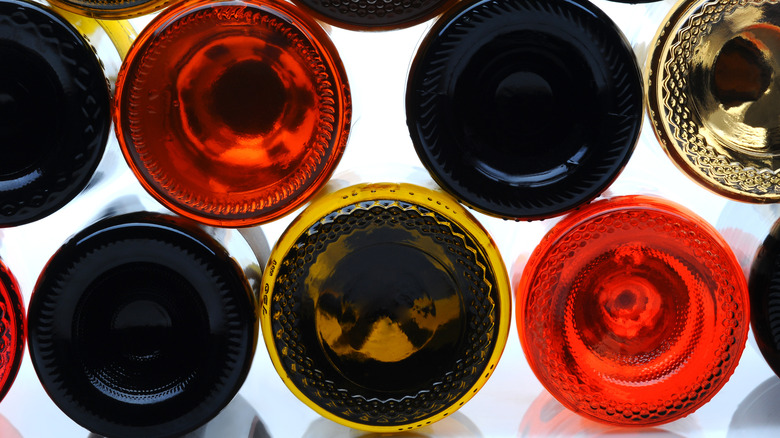Here's What The Indent At The Bottom Of Your Wine Bottle Actually Does
Whether you regularly pour yourself a glass of wine at the end of the day or you love to order bottle service when out for an elegant dinner, chances are you have probably noticed one key component in the shape of wine bottles. Of course, bottles have a neck and a rim, but at the very bottom of the bottle, you might also find an indention. As it turns out, the technical name for that indent is actually the wine bottle's "punt," according to Reader's Digest. Even with an official name, though, you might still find this unusual shape built into the bottle rather strange and maybe even arbitrary. But as it turns out, it does serve a purpose and a specific function.
One of those reasons has to do with age-old history and the development of wine through time. Per VinePair, the punt was originally placed at the bottom of the bottle for both safety and practical reasons. It not only allowed glass-blowing bottle makers to ensure the bottle was sturdy and would not shatter or pop. It was also a way for blowers to ensure no sharp edges were poking out from the bottle that might hurt the consumer. But in a time when bottles are manufactured rather than blown, there is a modern function for the punt now, too.
The modern purpose for wine bottle punts
Just as the means for making wine bottles has changed, the practical uses for the original shape of the bottle have as well. According to Wine Spectator, the punt of a wine bottle is actually a favorite means for sommeliers to perform a formal wine service. During a formal wine service, the bottle should be presented before it is uncorked. But most importantly, many sommeliers use only one hand to pour the wine into the glasses on the table. That's why the bottle's bottom indent is invaluable, even today, to ensure the server has a firm grip on the wine and will not drop the bottle.
This is not, however, part of official sommelier training, the outlet notes. It may not even be permitted in some restaurants — especially since not all wine bottles are still made with punts. Yet another reason for punts, however, is the theory that the indent can help separate sediment from the wine. Per VinePair, for natural wines especially, punts can be helpful in preventing any settled sediment from being reintroduced back into the wine.

